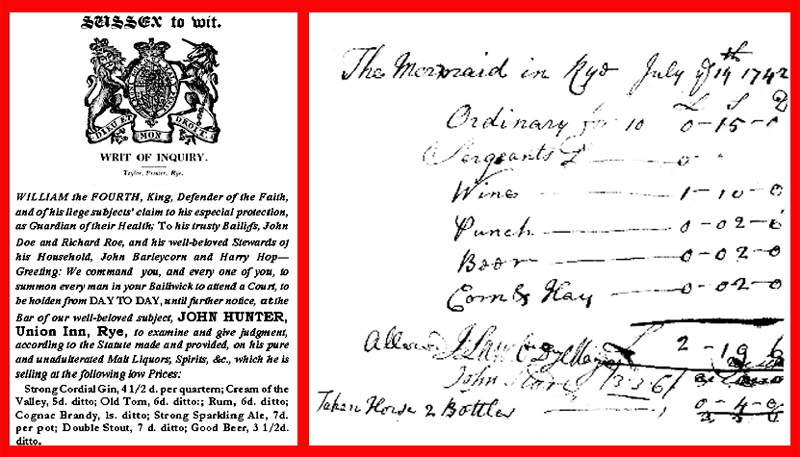From David Russell’s well-researched account of the pubs of Rye over the 200 years from 1750 to 1950, we get in fascinating detail not only the history of 32 local hostelries, but also a glimpse of the attitudes of authority to ordinary citizens drinking in public. We are now accustomed to wide variations in official tolerance towards this form of public recreation, from prohibitions on drink-driving and smoking, to relaxations of late-night opening and the lack of law enforcement of public drunkenness. The landlord of the past certainly had his, or often her, problems to contend with. Stricter licensing laws were enforced by magistrates and the police to control public disorder. The Temperance movement may have commanded great respect in many sections of society, but it was also seen as a restraint of trade and another form of imposition on the poor.
After the book’s very readable introduction, we are taken in turn through the history of each pub, for which records survive. Their stories are told from old photographs, newspaper cuttings and county archive material. There is depicted a richness of colourful character, for example, George Tedham, the landlord of the London Stout House in Ferry Road, who was taken “sensibly drunk”, or Mr Collyer, the licensee of The Oak in the High Street, who lost his licence. He “had tried to keep a respectable house”, he said, “but the people would not go there because they were seen. It was too public. The trade might increase if the rougher classes were admitted.” Not surprisingly perhaps, the magistrates closed him down.
I would like to learn more about the role of the socially and economically powerful brewers such as the Lamb family, who largely controlled the fortunes of Rye’s locals. The system of tied houses with licensees was well established since early times. At least three breweries were to be found in Rye, including the Albion Brewery off Cinque Ports Street and the Eagle Brewery in Eagle Road. The latter was sold in the year 1900 by John Bowen to Alfred Leney & Company of Dover, before being purchased freehold in 1924 by Burnham’s as a builder’s yard and carpentry workshop, and now since 2004 developed for housing. The whereabouts of Hodges and Ritchie, the other Rye brewery mentioned in the book, is unknown but this concern could have also been the owners of the Eagle Brewery who sold out to John Bowen in 1890.
Not least interesting are the five appendices. The whole book sheds a fascinating light on an area of Rye’s story that is fast disappearing. As we see around us the decline and closure of so many of the Rye pubs, and recognise the economic pressures for their change of use, we can appreciate the important role played in our social history by this great institution, the British pub. Perhaps now we can look forward to a sixth appendix in a third edition, bringing the record of each surviving pub up to date?
The Pubs of Rye, East Sussex, 1750-1950, £13.99, can be bought by emailing hastings.pubs@gmail.com (phone 01424 200227).



